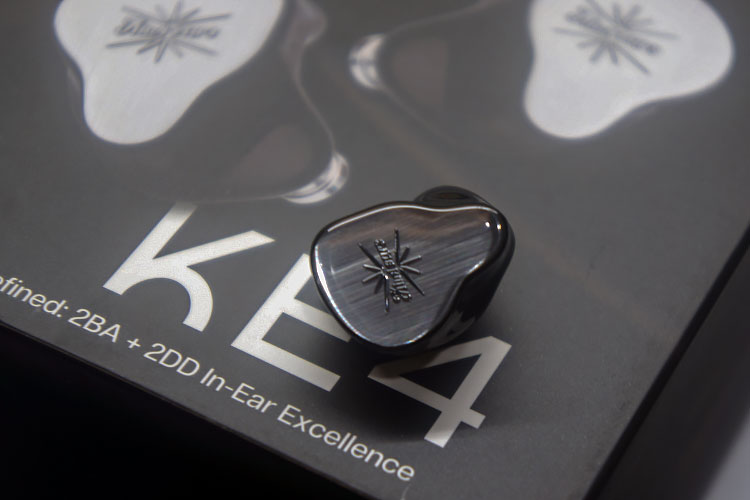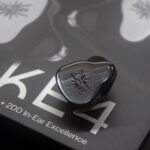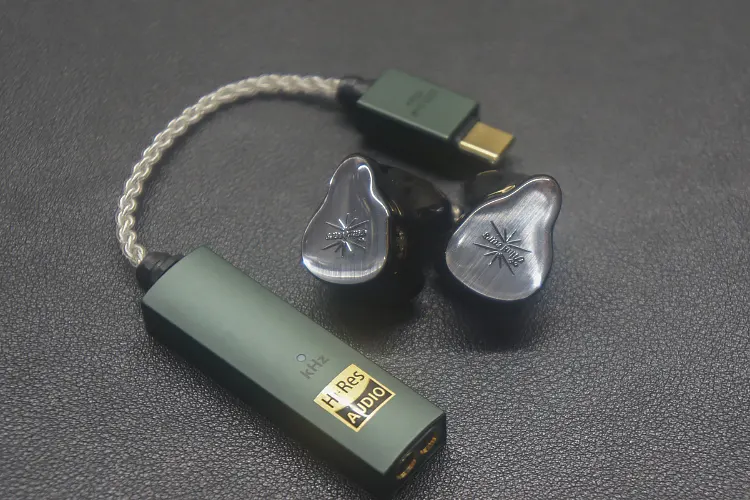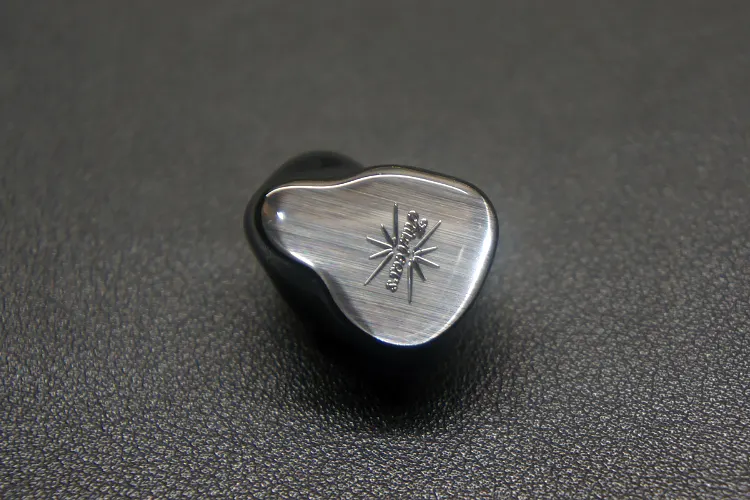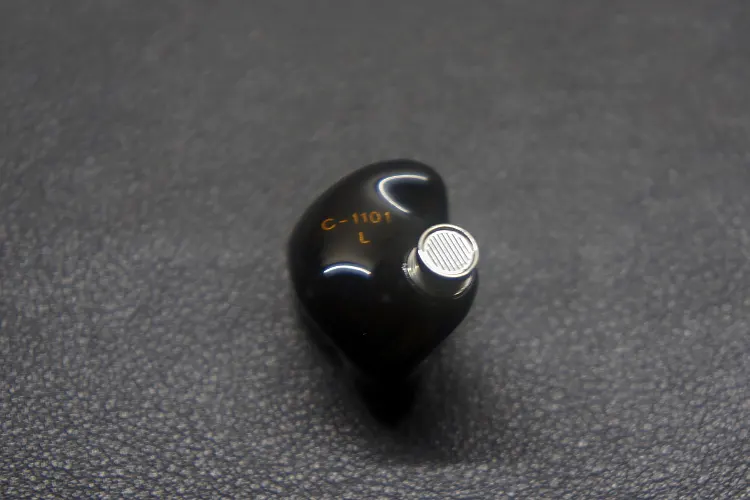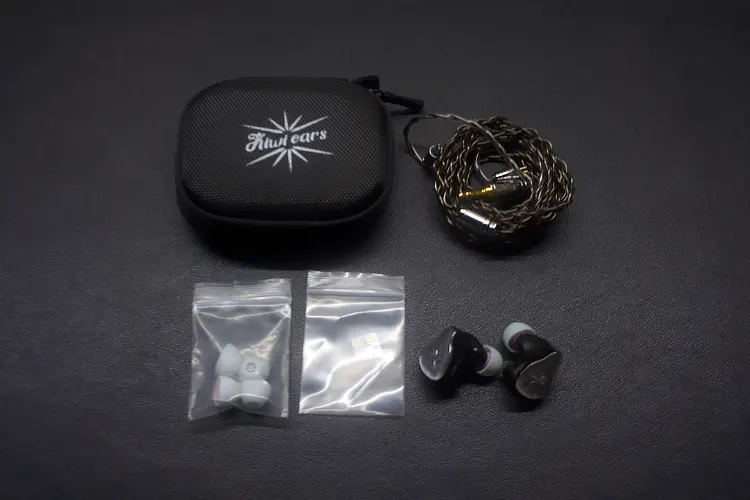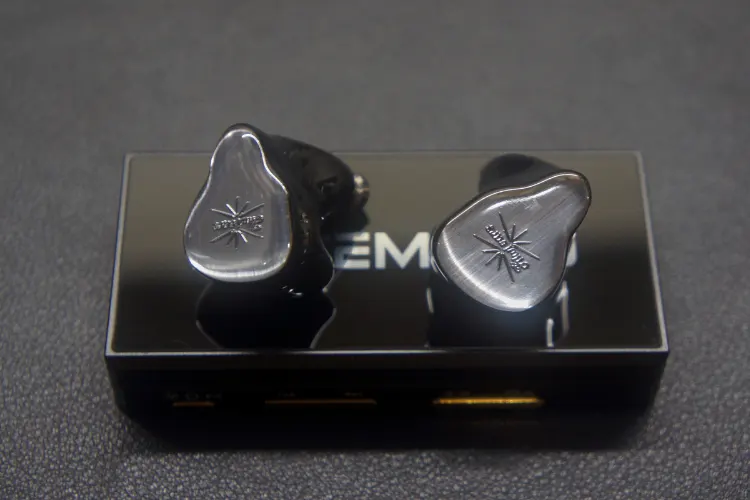In this feature, Meldrick reviews the Kiwi Ears KE4, a hybrid universal IEM featuring two BA and a dual dynamic isobaric driver configuration. It is priced at $199.
Disclaimer: This sample was sent in exchange for my honest opinion. Headfonics is an independent website with no affiliate links or services. I thank Linsoul and Kiwi Ears for their support.
Click here to read up on Kiwi Ears gear previously reviewed on Headfonics.
This article follows our latest scoring guidelines which you can read in more detail here.
Kiwi Ears has had an impressive first few years with IEMs such as the Quartet, Quintet, and the Orchestra. Today, Kiwi is trying to sustain its upward momentum with the new KE4 IEM.
Costing $199, the KE4’s hybrid dual dynamic and 2 BA driver configuration aims to deliver a compelling balance between technical performance and a pleasing tuning profile, partially motivated by the “new meta” tuning style making the rounds within the ChiFi community.
To see if the KE4 creates a unique sound in the sub-$200 bracket head-on, read my thoughts and comparisons below.
Features
The KE4 features a four-driver hybrid system, combining 2 dynamic drivers in an isobaric configuration for the bass, and 2 balanced armatures to handle mids and treble frequencies. This setup aims to provide a dynamic yet precise sound signature across the frequency range.
Kiwi Ears selected a pair of American-made Knowles RAD 33518 BA drivers for the KE4, aiming to deliver a lush midrange presentation and organic-sounding treble to complement the rest of the frequency response.
The 4 drivers are meshed with their precision 3-way passive crossover wherein each driver has an independent sound tube. These drivers were configured to match Kiwi Ear’s new target; the result of years of research to deliver a thumping sub-bass and a warm-sounding mid-range.
Design
Just like Kiwi Ears’ other IEMs, the KE4 is built from what appears to be a one-piece 3D-printed shell constructed from medical-grade resin. The shell has a glossy finish that does a good job of hiding fingerprints even after prolonged usage.
The main body of the shell has a deep black translucent that hides most of the internals, however, on closer inspection at the right lighting conditions highlights the dynamic drivers placed inside the IEMs.
Despite having a one-piece construction with no visible seams between the main body and faceplate, the KE4’s front faceplate has a silver brushed aluminum aesthetic with a stylized Kiwi Ears logo placed squarely in the center.
This front faceplate appears encased within the resin shell, improving its durability and wear resistance in daily use.
With its resin-built metal tuning vents and metal nozzle, the KE4 is built similarly to most of the brand’s IEMs. It does a good job of balancing a neutral aesthetic without blending into simple black aesthetics.
Comfort & Isolation
The Kiwi Ears KE4 offers an average level of comfort, owing to its large yet ergonomic shape and moderate weight.
The earphones fit securely in the ear canal, with a slight overhang due to the shell’s larger size. However, despite the size, I experienced no significant fatigue or discomfort, even during extended listening sessions.
The KE4 provides decent isolation from external noise, even with its vented shell design, effectively reducing pressure build-up and contributing to enhanced comfort, especially after prolonged continuous usage.
In terms of overall comfort, the KE4 is adequate but not exceptional. While it doesn’t quite match my comfort benchmarks, such as the Open Audio Witch Pro, it is more comfortable than the slightly larger Moondrop Blessing 3.
Stock Cable
The stock cable of the Kiwi Ears KE4 features a 4-core oxygen-free silver-plated copper construction, terminating in a 3.5mm single-ended plug and a standard 0.78mm 2-pin connector.
The cable’s build feels solid and dependable, showcasing a sleek, polished finish. Its semi-transparent black sheath subtly exposes the silver-plated copper wires within.
The plug is gold-plated, encased in a smooth cylindrical metal housing, with the Kiwi Ears logo engraved in the middle.
The chin strap is crafted from the same polished cylindrical metal, though it remains unmarked by any branding.
The cable has respectable performance adding no microphonics in use. Throughout my desk and portable listening sessions, I experienced no noticeable interference or unwanted noise.
Packaging & Accessories
The KE4’s packaging is compact and tastefully designed, with Kiwi Ears branding and a detailed specification sheet. Inside, you’ll find:
- The KE4 IEMs
- 3x Silicone vented ear tips (S/M/L)
- The stock cable
- A hard carrying case with a soft interior lining
- Replacement nozzle filters
The inclusions are not class-leading by any means, with some cheaper IEMs already coming with 4.4mm modular cables. However, it is sufficient for most people to get started without much friction.
Sound Impressions
The following sound impressions of the Kiwi Ears KE4 were completed with a mix of the ddHiFi TC35Pro E2, 7Hz Artemis39, Kiwi Ears Allegro, iFi Audio GO link Max, and FiiO K11.
Bass
The KE4 has an organic-sounding tuning that leans towards the warm side, emphasizing impactful sub-bass and a smooth yet lush-sounding mid-bass.
The sub-bass presence is audible with good authority and impact. It does not deliver an overwhelming sense of bass, instead, it opts for a more controlled response that only delivers just enough sub-bass quantity needed for the track.
Acoustic kick drums and 808s are presented with good texture on the KE4. On good recordings and mixes, the minute differences between the different drum hits add a richer dimension to the track making them sound more engaging.
The KE4 also excels in delivering a warm mid-bass presentation. In disco-funk tracks, rhythmic bass lines have a rich comforting quality that compels the listener to take a more relaxed approach when listening to their music.
The resolution within the mid-bass region is not the best I’ve heard. More neutral-sounding IEMs such as the Blessing 3 certainly have better detail within this region.
However, the KE4’s tuning and emphasis on a warm presentation make this my go-to set for R&B, Funk, and disco tracks.
Mids
Despite the thick and warm sub-bass, the KE4 manages to deliver a clean and organic-sounding mid-range that does not get muddied up by the weightiness of the bass region.
String instruments are presented with good dynamics and harmonics. They do not have the same note weight as instruments within the bass region, however, they have good enough resolution performance to prevent me from looking for more.
Male vocals are presented with good authority and warmth. Vocal-centric jazz and blues tracks have a mesmerizing sense of warmth, with sting and vocal tones sounding like they surround the listener.
Female vocals are similarly detailed and resolving, however, they are not able to match the weight of male vocals.
Do not be mistaken, this is still a very good pair of IEMs for female-centric vocal tracks. They can present delicate vocals without sacrificing too much in terms of tuning.
However, I found that these shined best when listening to deep female vocalists such as Adele, where the power of the singer is felt through every portion of the mix.
Treble
The KE4 is still able to deliver resolving trebles and highs, however, its tuning philosophy places a greater emphasis on keeping the treble non-fatiguing and free from sibilance.
Hits from hi-hats and chimes do a good job accenting the rest of the frequency response, providing mixes with a good sense of energy and air.
However, I found that the treble of the KE4 rarely steals the attention away from the mids or bass. This is not inherently a bad thing; it just further illustrates the tuning philosophy taken by the KE4.
As a listener, I found this treble presentation preferable for daily listening. In situations wherein I want to relax and listen to my favorite tracks while getting some work done, I appreciate a treble tuning that doesn’t steal away my attention from my tasks.
However, listeners who prefer more active listening while identifying every part of the mix may find this treble tuning lacking.
Imaging
The imaging of the KE4 is average, capable of isolating and positioning instruments at a decent level, though it does not particularly excel in this area.
Its soundstage performance is also middling; it is not expansive enough to fully immerse you in a vast wall of sound, yet it avoids being overly intimate to the point of compromising the sense of atmosphere.
Click on page 2 below for my recommended pairings and selected comparisons.

